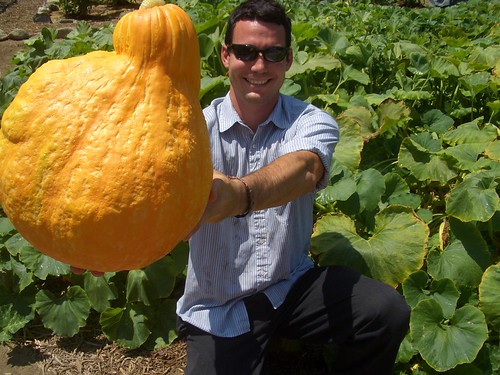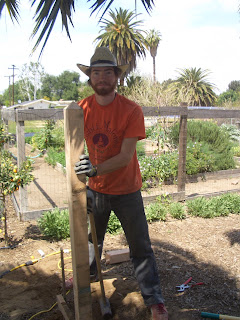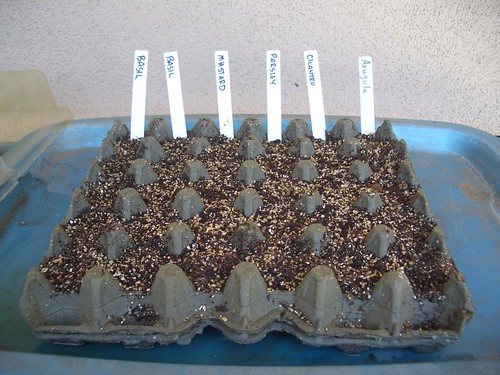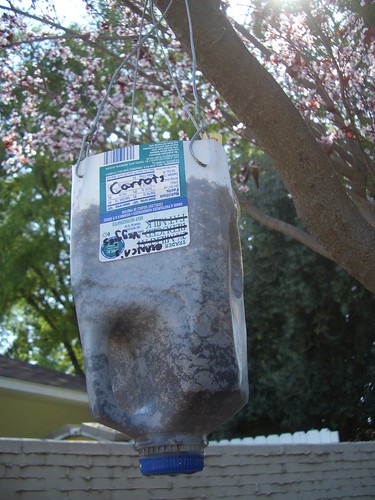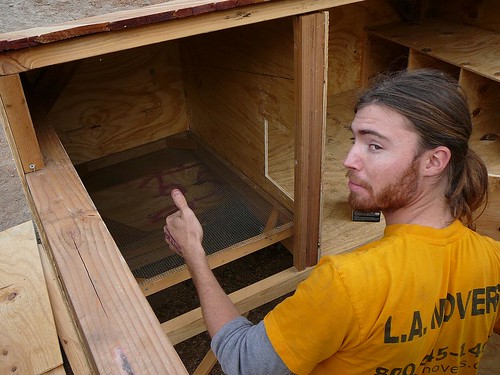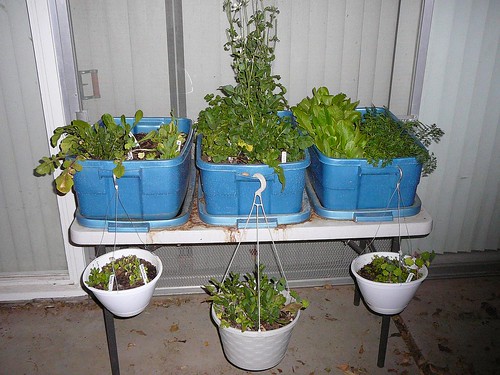
Awesome Mizuna and Shungiku mustardy greens growing around some carrots, calendula, some really healthy tomatoes, some peppers, a forest of turnips, and some radishes.

SQUASH! Summer squash, or zucchini, the healthiest my mom has ever grown, with some volunteer onions popping up in between.

Spencer and Sarah's bed has a whole polyculture of spring and summer plants, with chard, mountain spinach, onions, tomatoes, squash, zucchini, yarrow, and arugula.

My nephew Owen and niece Addison helped plant the beans in this plot, which also has my transplanted tomatoes, tomatillos, purple mountain spinach, cucumbers (with their sweet bamboo pyramid), squash, and amaranth.

I designed a tree of life keyhole walkway in my mom's herb garden, where all different types of basil, thyme, oregano, marjoram, chamomile, lavender, agastache, savory, sorrel, geraniums, sage, rosemary, and more add spice to our garden and our meals.

Globe artichokes. Not quite as tender as the purple kind, but great producers!

Sarah designed this keyhole bed, where carrots share space with different chards, brussel sprouts, lettuce and mixed greens, arugula, tomatoes, and green onions.

Bianca pauses while she designs the three sisters' garden to take a breath and pose for the camera.

There is method to our madness. This will be the welcome area to our workshop space, with a variety of different warm and dry weather vegetable guilds as illustrated in Sarah's previous post.

Spencer irrigates.

Swinging a pickaxe all day in 100 degree weather is what my grandparents used to call a 'character building' experience.

Bianca and Rufus test out the new chicken tractor, as Sarah and Spencer attach the chicken wire. Our good friend Betty donated 5 more chickens to the flock, but when we introduced them to the old hens they nearly got pecked to death... hence, the new mobile chicken coop.

A finished three sisters garden bed. For now, the straw covered mounds have 4 corn seeds planted in each. Once the corn pops up, we'll plant the runner beans to climb up their natural 'trellis', and then we plant the squash in the other mounds to spread out and shade/protect the topsoil... All fertilized organically with goat and llama manure.
So thats what we were up to this past weekend at Growcology. We've also been developing an online resource that we'll mention in our upcoming newsletter, as well as some programs with the various community gardens in the city. More to come soon!


